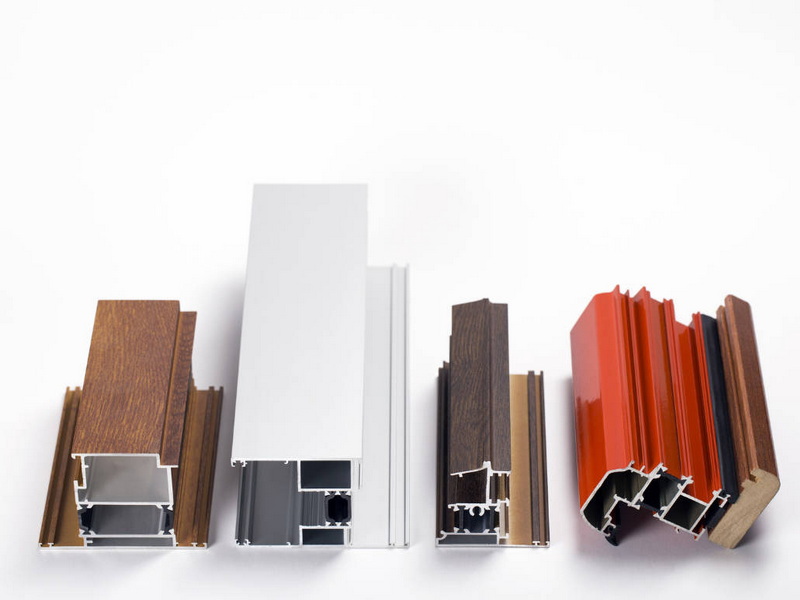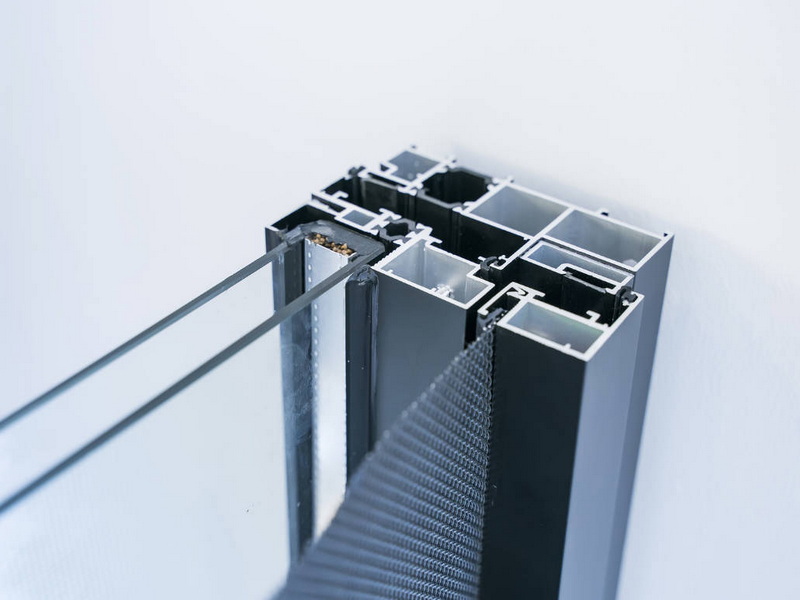English 




Views: 222 Author: Astin Publish Time: 2025-03-28 Origin: Site



Content Menu
● Introduction to Aluminum Profiles
>> Applications of Aluminum Profiles
● Factors to Consider When Choosing Aluminum Profiles
>> 4. Thickness
>> 6. Supplier
>> 7. Cost
● Mechanical Properties to Consider
● Thermal Conductivity and Insulation
>> 1. What are the key factors to consider when choosing aluminum profiles?
>> 2. What are the common applications of aluminum profiles?
>> 3. How do I determine the right alloy for my project?
>> 4. What is the importance of surface finish in aluminum profiles?
>> 5. How do I ensure I am buying from a reliable supplier?
Choosing the right aluminum profiles for your project can be a daunting task, especially with the numerous options available in the market. Aluminum profiles are versatile, lightweight, and durable, making them ideal for various applications, from construction and manufacturing to electronics and consumer goods. This article will guide you through the key factors to consider when selecting aluminum profiles, ensuring you make an informed decision for your needs.

Aluminum profiles are extruded shapes made from aluminum, widely used in construction for window frames, door frames, curtain walls, and roofing systems. They are also common in transportation and the manufacturing of furniture, electronics, and consumer goods. The popularity of aluminum profiles stems from their excellent strength-to-weight ratio, corrosion resistance, and ease of machining.
- Construction: Aluminum profiles are used in building structures such as windows, doors, and curtain walls due to their strength and durability.
- Transportation: They are used in vehicle manufacturing for lightweight yet strong components.
- Manufacturing: Aluminum profiles are integral in producing various consumer goods, including electronics and furniture.
When selecting aluminum profiles, several factors must be considered to ensure you choose the right ones for your project.
Understanding the purpose of the aluminum profile is crucial. Are you looking for something decorative or functional? Do you need strength and durability, or is the primary concern aesthetics? For projects requiring high strength and load-bearing capacity, thicker and stronger profiles are ideal. On the other hand, slim profiles with fine finishes can be used for decorative purposes or where lightweight is required. For instance, in the construction of a high-rise building's facade, high-strength aluminum profiles are essential to ensure the structure can withstand wind loads and environmental stress. Meanwhile, in the creation of an LED lighting fixture, a lightweight and aesthetically pleasing profile may be more appropriate.
Aluminum profiles come in various shapes and sizes, ranging from simple square or rectangular profiles to complex profiles with intricate designs. Consider which shape will work best for your project and ensure you have the right sizes for different parts of your project. The shape and size also affect the profile's structural integrity and its ability to perform its intended function. For example, in automotive applications, complex extruded shapes can provide both structural support and aerodynamic efficiency. Similarly, in electronic enclosures, specialized profiles can facilitate heat dissipation and protect sensitive components.
Aluminum profiles come in a range of surface finishes, including raw, anodized, or painted finishes. Determine which finish will best suit your project. For example, a polished finish could be ideal for a decorative project, while a matte finish may be more appropriate for a part that will be visible but not decorative. The surface finish not only enhances the appearance but also provides protection against corrosion and wear. Anodizing, for instance, is an electrochemical process that forms a durable, corrosion-resistant oxide layer on the surface of the aluminum. Powder coating, on the other hand, provides a wider range of colors and textures, as well as improved resistance to scratches and UV exposure.
The thickness of the aluminum profile directly impacts its strength. Consider the load it will need to bear and choose an appropriate thickness accordingly. A thicker profile is generally stronger but also heavier and more expensive. Therefore, it is essential to strike a balance between strength and cost. In structural applications, such as bridge construction or aircraft components, the thickness of the aluminum profile is critical to ensure the structure can withstand the stresses it will encounter.
Different aluminum alloys have unique properties. Look for an alloy that suits your needs in terms of strength, corrosion resistance, and machinability. Common aluminum alloys include:
- 1000 Series: Pure aluminum, known for its good conductivity and corrosion resistance. This series is often used in chemical tanks and electrical conductors.
- 2000 Series: Copper alloys, high strength but less corrosion resistant. Commonly used in aerospace applications due to their high strength-to-weight ratio, but require protective coatings to prevent corrosion.
- 3000 Series: Manganese alloys, good corrosion resistance. Used in applications such as cooking utensils and roofing.
- 5000 Series: Magnesium alloys, excellent corrosion resistance. Ideal for marine environments and structural components.
- 6000 Series: Magnesium and silicon alloys, balanced strength and corrosion resistance. Used in a wide range of applications, including architectural extrusions, transportation equipment, and furniture.
- 7000 Series: Zinc alloys, highest strength, used in aerospace and high-demand applications. This series offers the highest strength but is also more prone to corrosion.
Ensure that you buy your aluminum profiles from a trustworthy supplier. Look for a supplier known for high-quality products and one that can provide customized solutions. A reliable supplier should also provide technical support, including material certifications and design assistance. Selecting a supplier with a proven track record and a commitment to quality can help minimize the risk of defects or performance issues. Additionally, a supplier that offers customized solutions can help you optimize your design and reduce waste.
Finally, consider the cost of the aluminum profiles. Look for a supplier that offers a competitive price while still maintaining high-quality standards. Cost should not be the only factor in your decision, but it is an important consideration. Evaluate the total cost of ownership, including the initial purchase price, maintenance costs, and potential replacement costs. Consider the long-term value of the aluminum profiles and choose the option that offers the best balance of cost and performance.

When choosing aluminum profiles, it's essential to consider their mechanical properties, such as tensile strength, yield strength, and impact resistance. Tensile strength refers to the amount of stress the material can withstand before it starts to deform permanently. Yield strength is the point at which the material begins to deform. Impact resistance measures the material's ability to withstand sudden impacts without fracturing. For high-strength applications, profiles with a tensile strength above 60,000 PSI and a yield strength of 20-25% are recommended.
Furthermore, consider the fatigue strength of the aluminum profiles if the application involves repetitive loading. Fatigue strength is the ability of the material to withstand repeated cycles of stress without failure.
Corrosion resistance is another critical factor, especially in environments where exposure to chemicals or moisture is high. The 5000 series, for example, offers excellent corrosion resistance, making it suitable for marine or outdoor applications.
To further enhance corrosion resistance, consider applying protective coatings such as anodizing or powder coating. Anodizing forms a thin, durable oxide layer on the surface of the aluminum, protecting it from corrosion. Powder coating provides a barrier against moisture and chemicals, further enhancing corrosion resistance.
The ease of machining is important for production efficiency. Alloys like 2011 are excellent for machining, while heat-treated materials can be more challenging to work with. Machinability refers to how easily the aluminum profile can be cut, drilled, or shaped. Good machinability can reduce production costs and improve the quality of the finished product. Alloys with good machinability also tend to produce less tool wear, further reducing costs.
If your project involves heat management, consider aluminum profiles with good thermal conductivity or insulation properties. Thermal conductivity refers to the material's ability to conduct heat, while thermal insulation refers to its ability to resist heat flow. Aluminum profiles with good thermal conductivity are used in heat sinks and heat exchangers to dissipate heat away from sensitive components. Aluminum profiles with good thermal insulation are used in building insulation to reduce heat transfer and improve energy efficiency. This is particularly important in applications like refrigeration units or heat exchangers.
For applications where thermal insulation is critical, consider using aluminum profiles with thermal breaks. Thermal breaks are non-conductive materials that are inserted into the profile to reduce heat transfer.
In recent years, sustainability has become an increasingly important consideration when choosing materials. Aluminum is a highly recyclable material, making it a sustainable choice for many applications. When choosing aluminum profiles, consider the source of the aluminum and whether it is made from recycled materials. Look for suppliers that are committed to sustainable practices and can provide information about the environmental impact of their products.
Conducting a comprehensive cost analysis is crucial to making an informed decision about aluminum profiles. This analysis should include the initial purchase price, fabrication costs, installation costs, and maintenance costs. Also, consider the lifespan of the aluminum profiles and potential replacement costs. By comparing the total cost of ownership for different options, you can make a more informed decision that balances cost and performance.
Ensure that the aluminum profiles you choose comply with all relevant regulations and standards. Depending on the application, there may be specific requirements for strength, corrosion resistance, or fire resistance. Check with local building codes and industry standards to ensure compliance.
Choosing the right aluminum profiles for your project involves careful consideration of several factors, including purpose, size, shape, surface finish, thickness, alloy type, supplier, and cost. By understanding these elements and selecting profiles that meet your specific needs, you can ensure the durability, efficiency, and cost-effectiveness of your project. Always prioritize quality and reliability to ensure that your project stands the test of time.

- The key factors include purpose, size, shape, surface finish, thickness, alloy type, supplier, and cost. Each of these factors plays a crucial role in ensuring the chosen profiles meet the project's requirements.
- Aluminum profiles are commonly used in construction for window frames, door frames, and curtain walls. They are also used in transportation and the manufacturing of furniture, electronics, and consumer goods.
- The choice of alloy depends on the project's requirements. For high strength, the 2000 or 7000 series may be suitable. For excellent corrosion resistance, the 5000 series is ideal. Consider factors like strength, corrosion resistance, and machinability when selecting an alloy.
- The surface finish affects both aesthetics and durability. Anodizing enhances corrosion resistance and provides a durable surface, while powder coating offers more color options and a smoother finish.
- Look for suppliers with a reputation for quality products and the ability to provide customized solutions. Check for product qualification certificates and customer reviews to ensure reliability.
[1] https://www.retop-industry.com/news/aluminium-alloy-profiles.html
[2] https://www.pailian-aluminium.com/news/how-to-choose-aluminium-profiles-68719816.html
[3] https://www.linkedin.com/pulse/6-factors-consider-aluminium-profile-
[4] https://jmaluminium.com/selecting-right-aluminium-profiles/
[5] https://www.khetangroup.net/blog-post/the-ultimate-checklist-for-choosing-aluminum-profiles/
[6] https://www.fortune-alu.com/info-detail/select-the-right-aluminum-profile
[7] https://www.premiumparts.com/blog/7-factors-to-consider-in-aluminium-profile-selection
[8] https://www.chaluminium.com/how-to-choose-the-right-aluminum-profiles
[9] https://www.china-me.com/news/article/aluminum-profiles-selection-and-knowledge
[10] https://www.ryerson.com/metal-resources/metal-market-intelligence/5-questions-on-aluminum-extrusions
[11] https://technical.europe.misumi-ec.com/en/support/solutions/articles/76000046645-aluminum-extrusions-general-questions
[12] https://starext.com/frequently-asked-questions-about-aluminum-extrusions
[13] https://www.gapengineering.com.au/blog/which-size-profile-is-the-right-one-for-my-project/
[14] https://www.alumac.my/blog/selection-of-alloy-decides-the-quality-of-extruded-aluminum-profile/
[15] https://www.lightstec.com/led-aluminum-profile-buying-guide/
[16] https://www.zetwerk.com/aluminum-extrusions/
[17] https://aidiwattlighting.com/led-aluminum-profiles-the-ultimate-buying-guide/
Top Aluminum Furnitures Manufacturers and Suppliers in Czech Republic
Top Aluminum Furnitures Manufacturers and Suppliers in Poland
Top Aluminum Furnitures Manufacturers and Suppliers in Belgium
Top Aluminum Furnitures Manufacturers and Suppliers in Finland
Top Aluminum Furnitures Manufacturers and Suppliers in Denmark
Top Aluminum Furnitures Manufacturers and Suppliers in Greece
Top Aluminum Furnitures Manufacturers and Suppliers in Portugal
Top Aluminum Furnitures Manufacturers and Suppliers in Austria
Top Aluminum Furnitures Manufacturers and Suppliers in Norway
Top Aluminum Furnitures Manufacturers and Suppliers in Sweden
